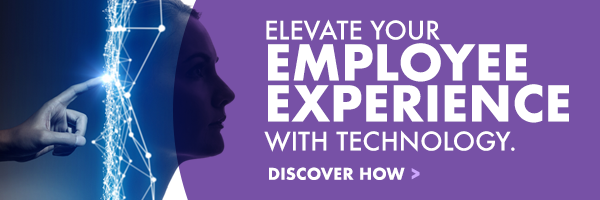The Hard Truth About Employee Engagement


If you aren’t concerned about employee engagement, you should be. And if you think it’s just a problem for Human Resources (HR) to deal with, you’re wrong.
Engaged employees are personally invested in your mission and make meaningful contributions that move your company forward. Employees who are not engaged slowly drain your resources until they either quit or get fired. But the vast majority of employees begin to check out quietly and gradually, not necessarily in a way that raises red flags.
What causes employees to become disengaged, and what can you do about it?
There’s no better person to answer that than Jill Christensen. 
An internationally known speaker and author of If Not You, Who? Cracking the Code of Employee Disengagement, she works with the best and brightest global leaders to improve productivity and retention, as well as customer satisfaction and revenue growth.
We’re honored to have her as our keynote speaker for the Workplace Champions Summit April 26.
Jill recently took some time out of her packed schedule to share some great insights about employee engagement. Here are just a few of them.
The Problem Is Worse Than You Think
The most recent Gallup poll shows only 33 percent of employees are engaged. That means almost two-thirds of employees are basically just showing up and collecting a paycheck. Of course there are varying degrees of employee disengagement, but any way you look at it, this is a concerning statistic.
Pay Isn’t The Culprit
After working with companies in more than a dozen industries over the past decade, Christensen has observed that pay isn’t usually the problem. So what is it?
She believes the biggest culprit lies with senior leadership—specifically, leadership’s inability to communicate a clear vision and help employees set measurable goals that align with it.
“People are feeling like their job is not meaningful and they cannot personally add value,” she said. “Millennials believe they cannot learn and grow in their current role. The majority of people get up and work because they want to make a difference. But many times, if you’re not in a revenue-generating role, people cannot see a line of sight between what they do every day and the organization’s mission and vision.”
Employee Engagement Is An Emotional Connection
For employees to become engaged, they need to have two things first:
- Trust in senior leadership
- An emotional connection to the organization or brand
Leaders need to start with a clear vision—what best-selling author and speaker Simon Sinek calls the “why”—and inspire employees to work toward it. They need to create a culture that gets employees excited and makes them feel valued.
Southwest Airlines is one company that does this extraordinarily well.
Culture at Southwest is based on three components:
- A Warrior Spirit: Working hard, desiring to be the best, being courageous, displaying a sense of urgency, persevering and innovating
- A Servant’s Heart: Following the Golden Rule, putting others first and being proactive
- A Fun-LUVing Attitude: Maintaining perspective, enjoying your work, celebrating success and being a passionate team player
To keep employees motivated, the airline recognizes employees in its monthly Spirit magazine and in a series of internal videos that tell stories of exceptional customer service.
Employee Engagement Starts At the Top
Christensen said too many organizations “outsource” the issue of employee engagement and company culture to their HR leaders when it really needs to come from above.
The CEO and your senior leadership need to take the lead and create an engagement strategy that defines how your organization will do things differently. Once the strategy has been defined, front-line managers need to execute on it consistently in the trenches.
Christensen said one simple thing organizations can do is conduct monthly focus groups of 8-12 employees and ask them to share their feedback about a certain topic. For instance, if it’s obvious your supply chain process is broken, your front-line employees will have the most insight into what’s going wrong and what could improve it.
Once employees have shared their ideas, follow up with them to acknowledge what you heard and what action plan you are putting in place to improve the process. This builds trust and makes employees more likely to be open and honest the next time, because they can see they have a voice and their voice is being heard.
“When you get really good at this, leadership doesn’t even have to say what the focus group is about,” she said. “They just let the employees pick the topic and drive the conversation.”
Want to hear more from Christensen? Join us for the Workplace Champions Summit, where she’ll share the four things that drive trust in senior leadership and lead to an emotional connection with your organization.
Space is limited, so register by April 18 to secure your spot!
